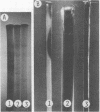Abstract
A thermolabile direct hemolysin from an El Tor cholera vibrio strain has been isolated and partially characterized as a simple protein of ca. 20,000 molecular weight. In addition to its hemolytic activity, the hemolysin is cytotoxic, cardiotoxic, and rapidly lethal. In these respects it resembles the thermostable direct hemolysin/cytotoxin/cardiotoxin/lethal toxin of Vibrio parahaemolyticus and certain other bacterial hemolysins, although there are other significant differences. Because identical diseases are produced by both hemolytic and nonhemolytic cholera vibrios, the El Tor hemolysin may be presumed to be pathogenetically irrelevant. These observations raise the question of "When is a toxic substance also a toxin?"
Full text
PDF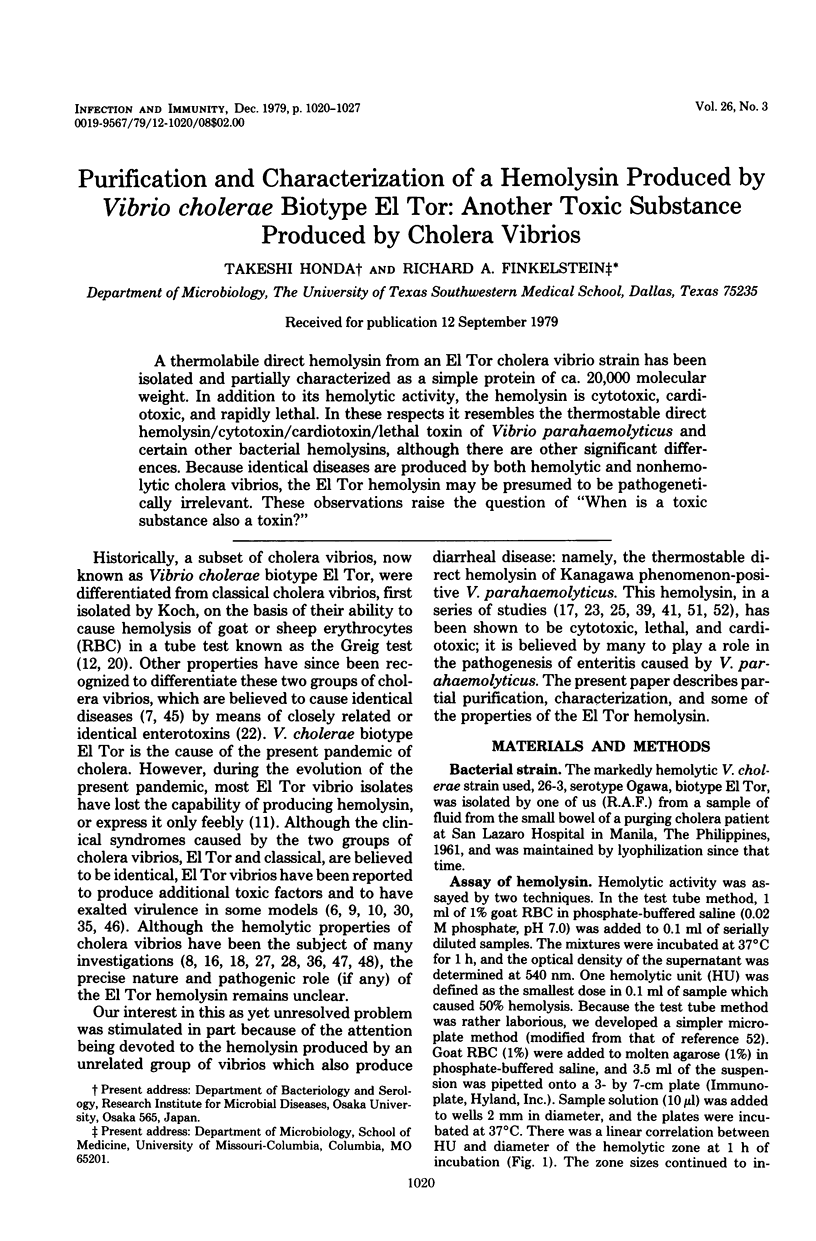
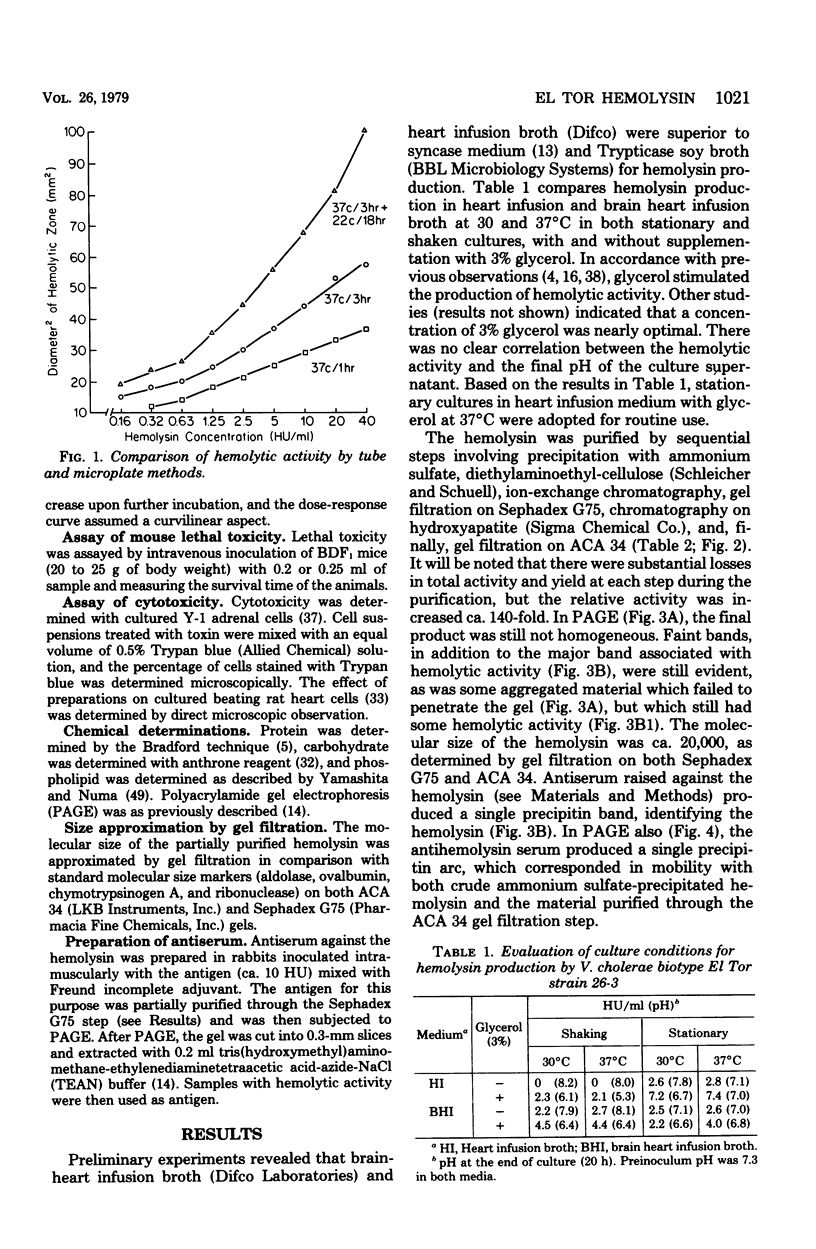
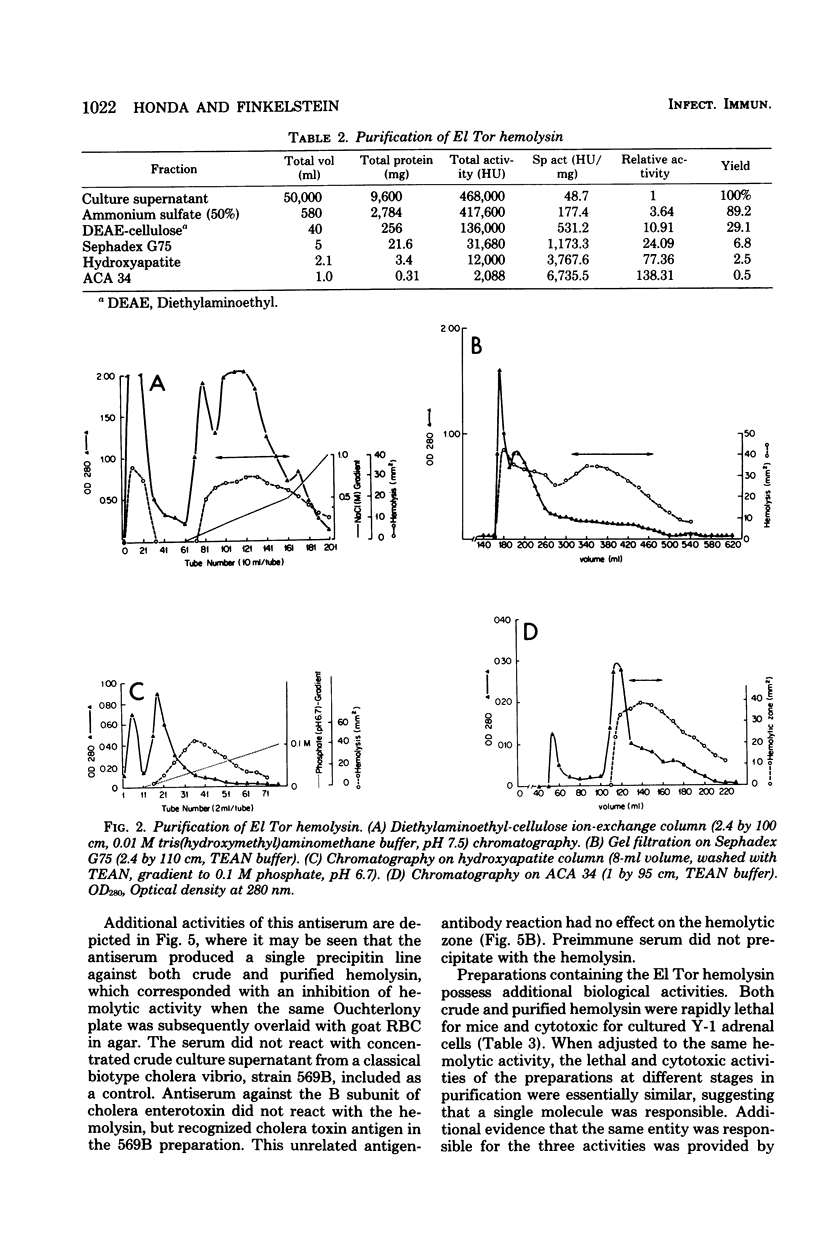
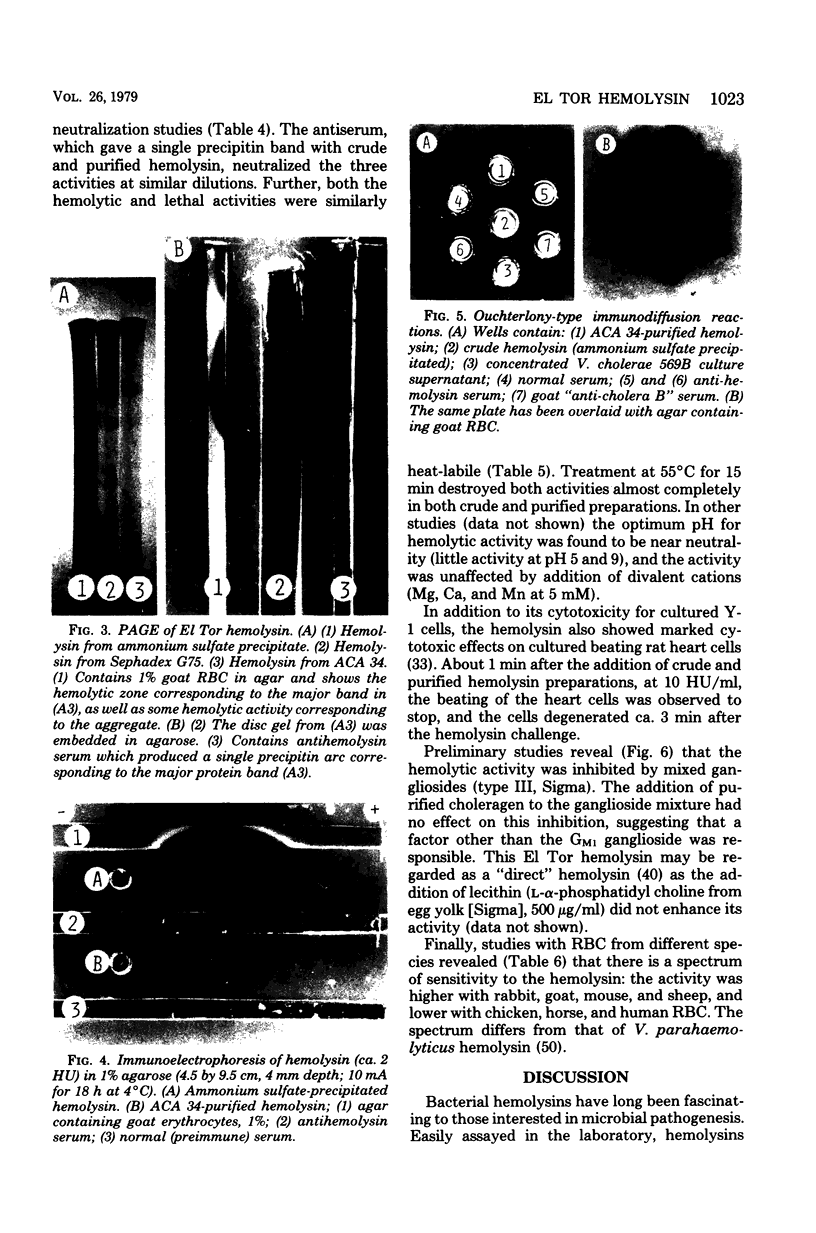
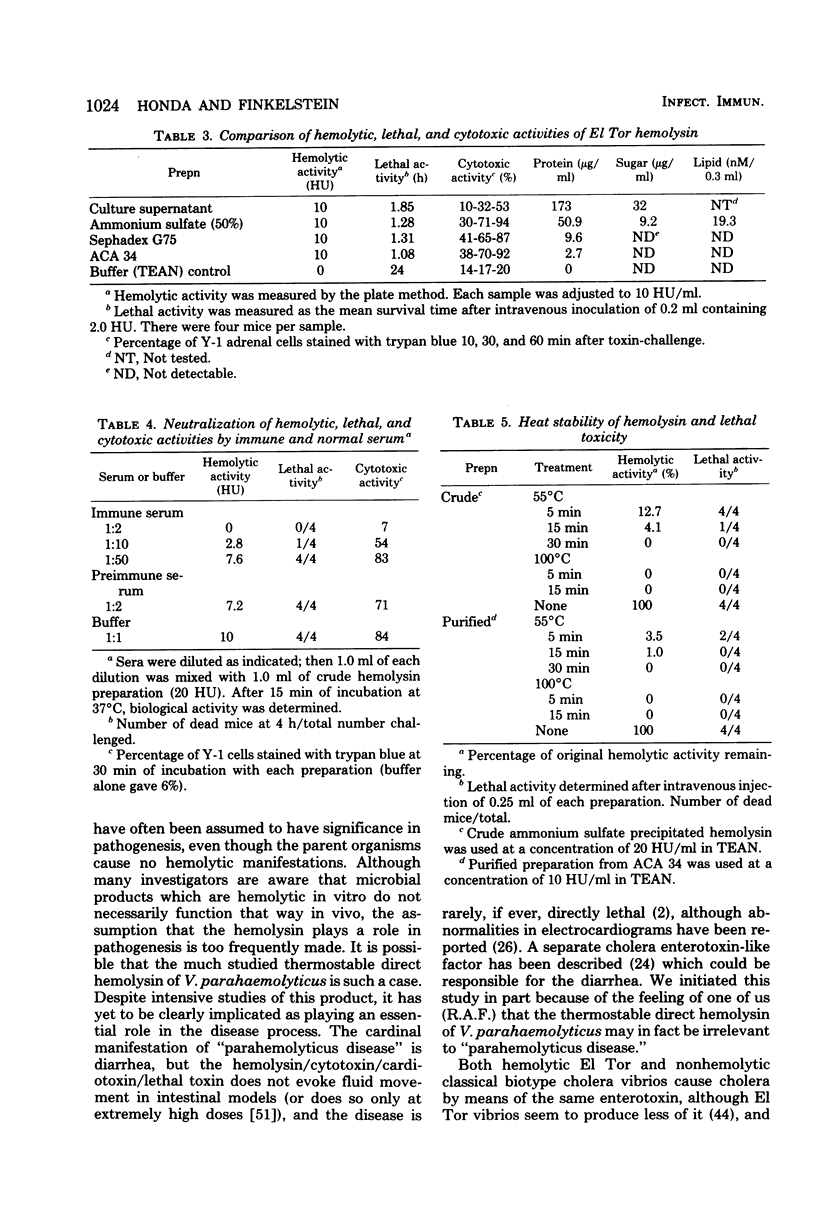
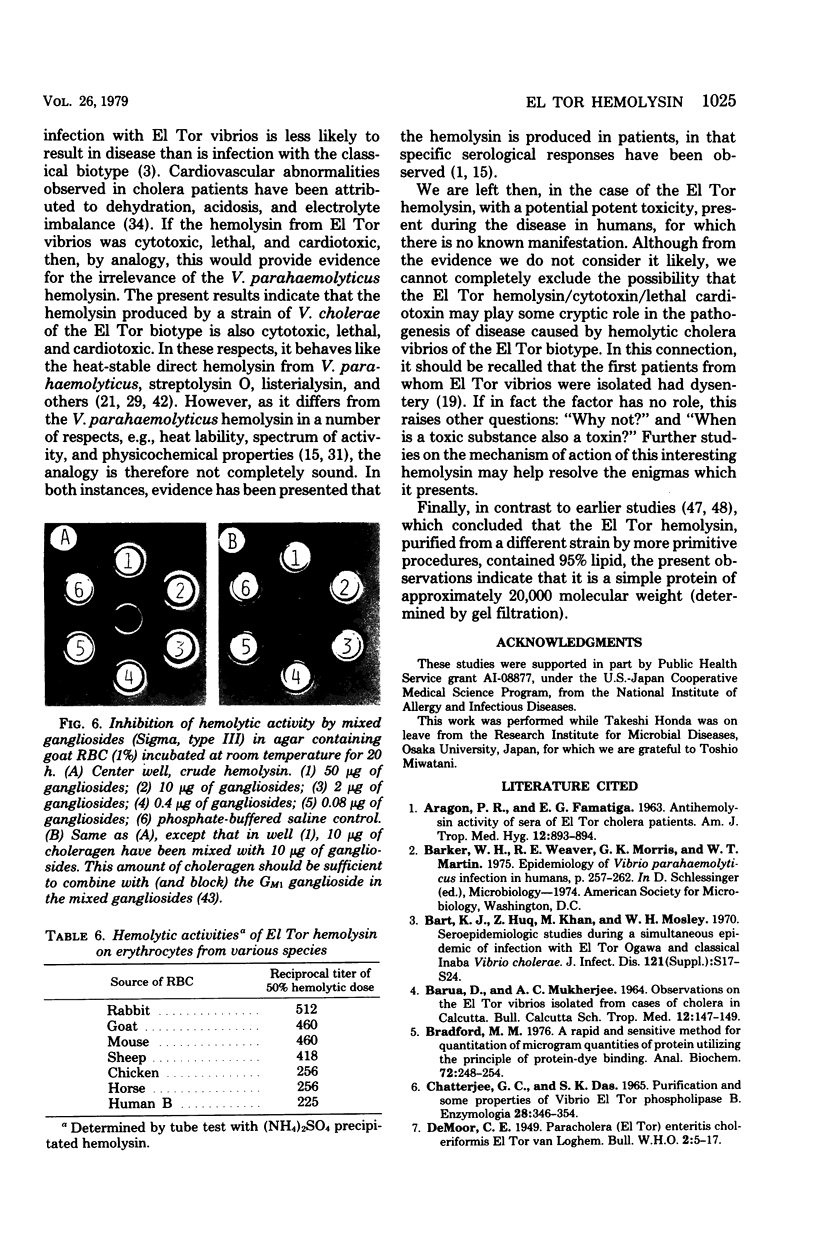
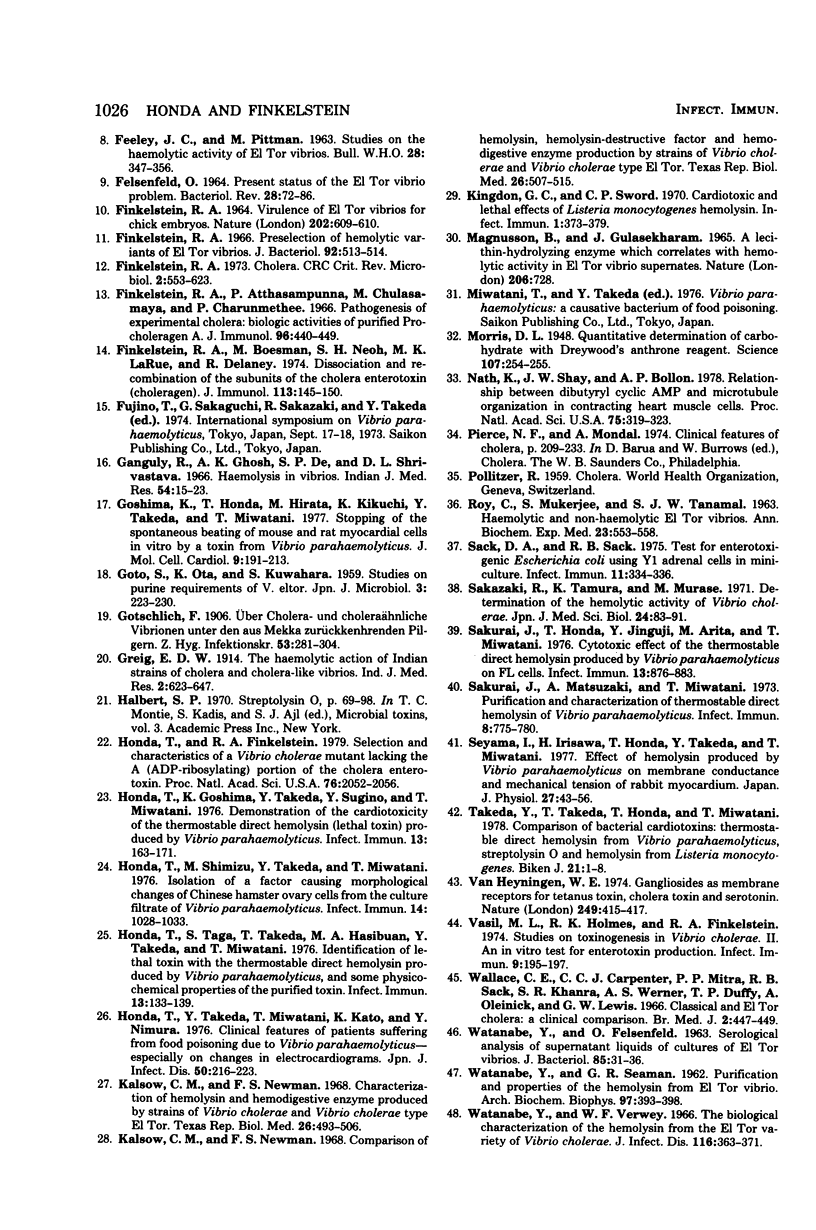
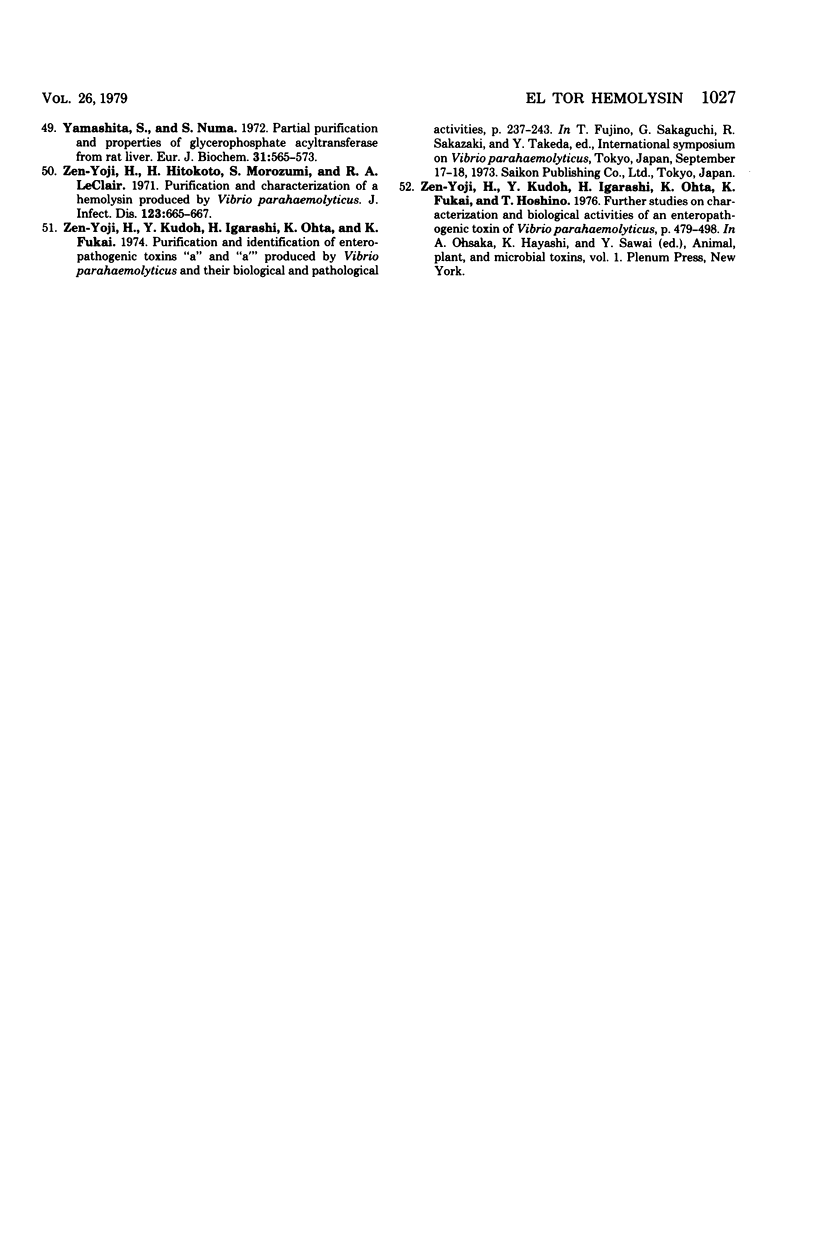
Images in this article
Selected References
These references are in PubMed. This may not be the complete list of references from this article.
- ARAGON P. R., FAMATIGA E. G. ANTIHEMOLYSIN ACTIVITY OF SERA OF E1 TOR CHOLERA PATIENTS. Am J Trop Med Hyg. 1963 Nov;12:893–894. doi: 10.4269/ajtmh.1963.12.893. [DOI] [PubMed] [Google Scholar]
- BARUA D., MUKHERJEE A. C. OBSERVATIONS ON THE EL TOR VIBRIOS ISOLATED FROM CASES OF CHOLERA IN CALCUTTA. Bull Calcutta Sch Trop Med. 1964 Oct;12:147–149. [PubMed] [Google Scholar]
- Bradford M. M. A rapid and sensitive method for the quantitation of microgram quantities of protein utilizing the principle of protein-dye binding. Anal Biochem. 1976 May 7;72:248–254. doi: 10.1016/0003-2697(76)90527-3. [DOI] [PubMed] [Google Scholar]
- Chatterjee G. C., Das S. K. Purification and some properties of Vibrio el tor phospholipase B. Enzymologia. 1965 Jun 30;28(6):346–354. [PubMed] [Google Scholar]
- FEELEY J. C., PITTMAN M. Studies on the haemolytic activity of El Tor vibrios. Bull World Health Organ. 1963;28(3):347–356. [PMC free article] [PubMed] [Google Scholar]
- FELSENFELD O. PRESENT STATUS OF THE EL TOR VIBRIO PROBLEM. Bacteriol Rev. 1964 Mar;28:72–86. doi: 10.1128/br.28.1.72-86.1964. [DOI] [PMC free article] [PubMed] [Google Scholar]
- FINKELSTEIN R. A. VIRULENCE OF EL TOR VIBRIOS FOR CHICK EMBRYOS. Nature. 1964 May 9;202:609–610. doi: 10.1038/202609a0. [DOI] [PubMed] [Google Scholar]
- Finkelstein R. A., Atthasampunna P., Chulasamaya M., Charunmethee P. Pathogenesis of experimental cholera: biologic ativities of purified procholeragen A. J Immunol. 1966 Mar;96(3):440–449. [PubMed] [Google Scholar]
- Finkelstein R. A., Boesman M., Neoh S. H., LaRue M. K., Delaney R. Dissociation and recombination of the subunits of the cholera enterotoxin (choleragen). J Immunol. 1974 Jul;113(1):145–150. [PubMed] [Google Scholar]
- Finkelstein R. A. Preselection of hemolytic variants of el tor vibrios. J Bacteriol. 1966 Aug;92(2):513–514. doi: 10.1128/jb.92.2.513-514.1966. [DOI] [PMC free article] [PubMed] [Google Scholar]
- GOTO S., OTA K., KUWAHARA S. Studies on the purine requirements of Vibrio El Tor. Jpn J Microbiol. 1960 Apr;3:223–230. doi: 10.1111/j.1348-0421.1959.tb00118.x. [DOI] [PubMed] [Google Scholar]
- Goshima K., Honda T., Hirata M., Kikuchi K., Takeda Y. Stopping of the spontaneous beating of mouse and rat myocardial cells in vitro by a toxin from Vibrio parahaemolyticus. J Mol Cell Cardiol. 1977 Mar;9(3):191–213. doi: 10.1016/0022-2828(77)90029-3. [DOI] [PubMed] [Google Scholar]
- Honda T., Finkelstein R. A. Selection and characteristics of a Vibrio cholerae mutant lacking the A (ADP-ribosylating) portion of the cholera enterotoxin. Proc Natl Acad Sci U S A. 1979 Apr;76(4):2052–2056. doi: 10.1073/pnas.76.4.2052. [DOI] [PMC free article] [PubMed] [Google Scholar]
- Honda T., Goshima K., Takeda Y., Sugino Y., Miwatani T. Demonstration of the cardiotoxicity of the thermostable direct hemolysin (lethal toxin) produced by Vibrio parahaemolyticus. Infect Immun. 1976 Jan;13(1):163–171. doi: 10.1128/iai.13.1.163-171.1976. [DOI] [PMC free article] [PubMed] [Google Scholar]
- Honda T., Shimizu M., Takeda Y., Miwatani T. Isolation of a factor causing morphological changes of chinese hamster ovary cells from the culture filtrate of Vibrio parahaemolyticus. Infect Immun. 1976 Oct;14(4):1028–1033. doi: 10.1128/iai.14.4.1028-1033.1976. [DOI] [PMC free article] [PubMed] [Google Scholar]
- Honda T., Taga S., Takeda T., Hasibuan M. A., Takeda Y., Miwatani T. Identification of lethal toxin with the thermostable direct hemolysin produced by Vibrio parahaemolyticus, and some physicochemical properties of the purified toxin. Infect Immun. 1976 Jan;13(1):133–139. doi: 10.1128/iai.13.1.133-139.1976. [DOI] [PMC free article] [PubMed] [Google Scholar]
- Honda T., Takeda Y., Miwatani T., Kato K., Nimura Y. [Clinical features of patients suffering from food poisoning due to Vibrio parahaemolyticus - with special reference to changes in electrocardiograms]. Kansenshogaku Zasshi. 1976 Jun;50(6):216–223. doi: 10.11150/kansenshogakuzasshi1970.50.216. [DOI] [PubMed] [Google Scholar]
- Kalsow C. M., Newman F. S. Characterization of hemolysin and hemodigestive enzyme produced by strains of Vibrio cholerae and Vibrio cholerae type El Tor. Tex Rep Biol Med. 1968 Winter;26(4):493–506. [PubMed] [Google Scholar]
- Kalsow C. M., Newman F. S. Comparison of hemolysin, hemolysin-destructive factor and hemodigestive enzyme production by strains of Vibrio cholerae and Vibrio cholerae type El Tor. Tex Rep Biol Med. 1968 Winter;26(4):507–515. [PubMed] [Google Scholar]
- Kingdon G. C., Sword C. P. Cardiotoxic and Lethal Effects of Listeria monocytogenes Hemolysin. Infect Immun. 1970 Apr;1(4):373–379. doi: 10.1128/iai.1.4.373-379.1970. [DOI] [PMC free article] [PubMed] [Google Scholar]
- Magnusson B., Gulasekharam J. A lecithin-hydrolysing enzyme which correlated with haemolytic activity in ElEl Tor vibrio supernates. Nature. 1965 May 15;206(985):728–728. doi: 10.1038/206728a0. [DOI] [PubMed] [Google Scholar]
- Morris D. L. Quantitative Determination of Carbohydrates With Dreywood's Anthrone Reagent. Science. 1948 Mar 5;107(2775):254–255. doi: 10.1126/science.107.2775.254. [DOI] [PubMed] [Google Scholar]
- Nath K., Shay J. W., Bollon A. P. Relationship between dibutyryl cyclic AMP and microtubule organization in contracting heart muscle cells. Proc Natl Acad Sci U S A. 1978 Jan;75(1):319–323. doi: 10.1073/pnas.75.1.319. [DOI] [PMC free article] [PubMed] [Google Scholar]
- ROY C., MUKERYEE S., TANAMAL S. J. HAEMOLYTIC AND NON-HAEMOLYTIC EL TOR VIBRIOS. Ann Biochem Exp Med. 1963 Dec;23:553–558. [PubMed] [Google Scholar]
- Sack D. A., Sack R. B. Test for enterotoxigenic Escherichia coli using Y-1 adrenal cells in miniculture. Infect Immun. 1975 Feb;11(2):334–336. doi: 10.1128/iai.11.2.334-336.1975. [DOI] [PMC free article] [PubMed] [Google Scholar]
- Sakazaki R., Tamura K., Murase M. Determination of the hemolytic activity of Vibrio cholerae. Jpn J Med Sci Biol. 1971 Apr;24(2):83–91. doi: 10.7883/yoken1952.24.83. [DOI] [PubMed] [Google Scholar]
- Sakurai J., Honda T., Jinguji Y., Arita M., Miwatani T. Cytotoxic effect of the thermostable direct hemolysin produced by Vibrio parahaemolyticus on FL cells. Infect Immun. 1976 Mar;13(3):876–883. doi: 10.1128/iai.13.3.876-883.1976. [DOI] [PMC free article] [PubMed] [Google Scholar]
- Sakurai J., Matsuzaki A., Miwatani T. Purification and characterization of thermostable direct hemolysin of Vibrio parahaemolyticus. Infect Immun. 1973 Nov;8(5):775–780. doi: 10.1128/iai.8.5.775-780.1973. [DOI] [PMC free article] [PubMed] [Google Scholar]
- Seyama I., Irisawa H., Honda T., Takeda Y., Miwatani T. Effect of hemolysin produced by Vibrio parahaemolyticus on membrane conductance and mechanical tension of rabbit myocardium. Jpn J Physiol. 1977;27(1):43–56. doi: 10.2170/jjphysiol.27.43. [DOI] [PubMed] [Google Scholar]
- Takeda Y., Takeda T., Honda T., Miwatani T. Comparison of bacterial cardiotoxins: thermostable direct hemolysin from Vibrio parahaemolyticus, streptolysin O and hemolysin from Listeria monocytogenes. Biken J. 1978 Mar;21(1):1–8. [PubMed] [Google Scholar]
- Vasil M. L., Holmes R. K., Finkelstein R. A. Studies on toxinogenesis in Vibrio cholerae. II. An vitro test for enterotoxin production. Infect Immun. 1974 Jan;9(1):195–197. doi: 10.1128/iai.9.1.195-197.1974. [DOI] [PMC free article] [PubMed] [Google Scholar]
- WATANABE Y., FELSENFELD O. Serological analysis of supernatant liquids of cultures of El Tor vibrios. J Bacteriol. 1963 Jan;85:31–36. doi: 10.1128/jb.85.1.31-36.1963. [DOI] [PMC free article] [PubMed] [Google Scholar]
- WATANABE Y., SEAMAN G. R. Purification and properties of the hemolysin from E1 Tor vibrio. Arch Biochem Biophys. 1962 May;97:393–398. doi: 10.1016/0003-9861(62)90095-4. [DOI] [PubMed] [Google Scholar]
- Wallace C. K., Carpenter C. C., Mitra P. P., Sack R. B., Khanra S. R., Werner A. S., Duffy T. P., Oleinick A., Lewis G. W. Classical and El Tor cholera: a clinical comparison. Br Med J. 1966 Aug 20;2(5511):447–449. doi: 10.1136/bmj.2.5511.447. [DOI] [PMC free article] [PubMed] [Google Scholar]
- Watanabe Y., Verwey W. F. The biological characterization of the hemolysin from the El Tor variety of Vibrio cholerae. J Infect Dis. 1966 Jun;116(3):363–371. doi: 10.1093/infdis/116.3.363. [DOI] [PubMed] [Google Scholar]
- Yamashita S., Numa S. Partial purification and properties of glycerophosphate acyltransferase from rat liver. Formation of 1-acylglycerol 3-phosphate from sn-glycerol 3-phosphate and palmityl coenzyme A. Eur J Biochem. 1972 Dec 18;31(3):565–573. doi: 10.1111/j.1432-1033.1972.tb02566.x. [DOI] [PubMed] [Google Scholar]
- Zen-Yoji H., Hitokoto H., Morozumi S., Le Clair R. A. Purification and characterization o;f a hemolysin produced by Vibrio parahaemolyticus. J Infect Dis. 1971 Jun;123(6):665–667. doi: 10.1093/infdis/123.6.665. [DOI] [PubMed] [Google Scholar]




